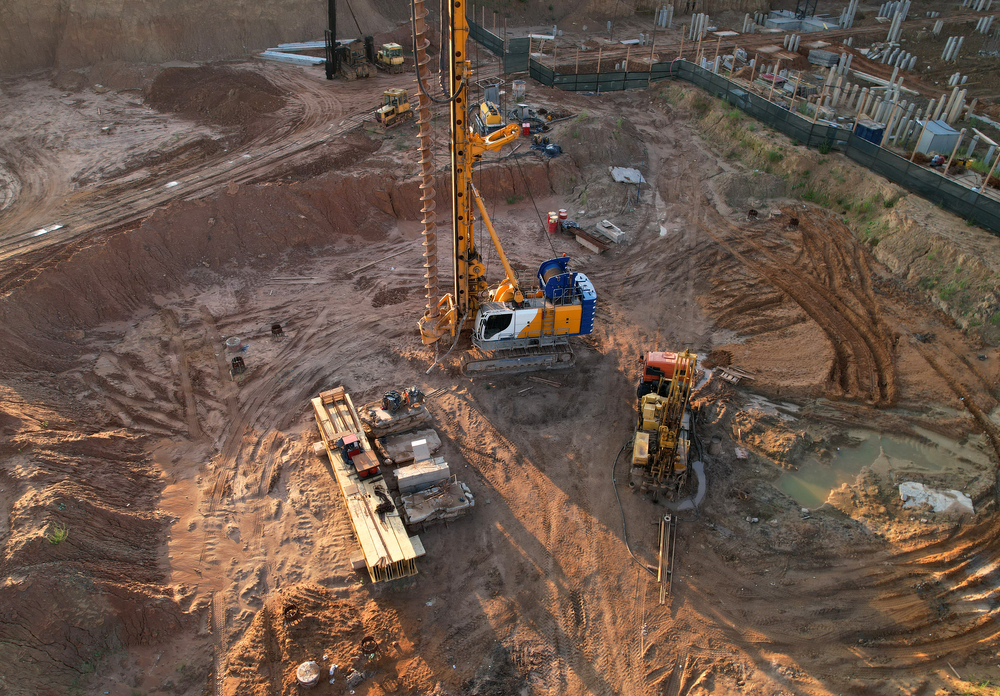The Of Geotheta
The Of Geotheta
Blog Article
The 7-Second Trick For Geotheta
Table of ContentsNot known Details About Geotheta 4 Easy Facts About Geotheta ShownExamine This Report on GeothetaUnknown Facts About Geotheta
They work together with civil designers, structural designers, designers, and other professionals to integrate geotechnical considerations into the overall job layout and building process. This calls for reliable team effort, sychronisation, and communication to ensure that the geotechnical facets straighten with the job purposes and satisfy regulatory requirements.Mining & Materials Design: Principles of drilling, infiltration rates, and variables impacting the option of drilling approach. Features of dynamites, shooting systems and blast patterns. Blasting techniques in surface area and underground operations. Unique blasting strategies at excavation boundaries. Resonance and sound control. Mechanical and continual strategies to fragmentation, including longwall shearing and fullface boring.
Integrated evaluation of fragmentation and comminution operations. Supplied by: Mining & Materials Engineering.
Little Known Facts About Geotheta.
Bachelor's level programs in civil, geotechnical, geological, and environmental engineering generally last 4 years and consist of basic education and learning training courses in English, social science, and the humanities, in addition to training courses in advanced maths, structural geology, and liquid mineralogy. (https://geotheta.webflow.io/)
Geotechnical engineering entails the assessment of the soil and rock problems at a particular site, and their implications for the advancement of that site. As the majority of frameworks rely upon the ground for assistance, it lacks shock that an in-depth understanding of the ground problems, and the suitability of foundation systems, are essential to the long-term stability and performance of the building or framework.
Being experts in the examination of geological developments and ground behaviour, geotechnical engineers do scientific investigations and testing to understand the impact these geological formations may have on the design and building and construction of building, civil and facilities jobs. This proficiency is vital for the layout and building and construction of structures, roadways, passages, dams, bridges, and water supply and sewer system.
The geotechnical team at Douglas Partners regularly seek advice from architects, layout engineers, developers, and contractors to make referrals on style and advancement propositions to ensure that the constructed structures are suitably developed for the ground problems. The style of footing systems requires to think about the weight of the structure, the ability of the ground to support that weight with each other with activity tolerances and efficient building.
See This Report on Geotheta
This task is considerably streamlined by the use our Douglas Map geospatial platform that makes this information conveniently easily accessible in an easy to make use of internet internet browser interface. A geotechnical engineer will direct the drilling of boreholes and examination pits to collect soil and various other examples, and additionally analyze surface attributes and ground direct exposures to form a geotechnical model of the subsurface conditions.
Depending on the project type and ground problems came across, lab testing might amongst other things analyze strength, compressibility, sensitivity and/or leaks in the structure of soil and rock examples. Hereafter information is collected and collated, the results are used for a geotechnical version of the site, which is commonly offered as areas across the site.

A geotechnical investigation by nature can only analyze the ground conditions at the areas pierced or excavated. Natural variations in soil and rock conditions can occur throughout a site and in between test places. It is consequently excellent technique that the geotechnical engineer be kept throughout building and construction of the project to provide on-site confirmation that the ground problems come across follow the expectations and guidance offered in the geotechnical examination record.
9 Easy Facts About Geotheta Described
Geotechnical engineers use their thorough understanding of soil and rock to analyze danger and resolve troubles on varied framework projectsGeotechnical design is a specialist branch of civil design which looks at the practices of earth products and the application of soil and rock technicians. Tailings Engineer. As a geotechnical designer, you see page will certainly examine the physical, mechanical and chemical residential properties of dirt and rock in order to develop foundations, maintaining frameworks and earthworks
Geotechnical engineering is very closely linked to and overlaps with, both engineering geology and ground design - https://www.provenexpert.com/geotheta/. It's possible to be experts in geotechnics or help a geotechnical business however be referred to as an engineering rock hound or a ground designer. As a geotechnical designer, you'll need to: develop and preserve connections with clients and various other professionals entailed in the website, throughout each projectmaintain security criteria on website be mindful of price implications when you make recommendationsstudy geological maps and aerial pictures from a variety of resources and from various time periodsexamine building intends to see just how feasible they are based upon your understanding of the siteinvestigate risks or geological hazards for the sitesearch for environmentally delicate functions, such as landfill beginning to develop accurate and interpretive ground modelsplan field investigationsdrill and analyse samples of bedrock, soil, groundwater and additional products manage other professionals on sitesolve technical concerns as they occur, such as unanticipated structures at drill sitesmonitor conditions throughout and after building to ensure frameworks are steady in the brief and lengthy termadding information gathered on website to your preliminary researchcreating geotechnical computations, illustrations, and two or three-dimensional computer system versions analyzing the datamaking suggestions concerning the recommended usage of the website

Report this page